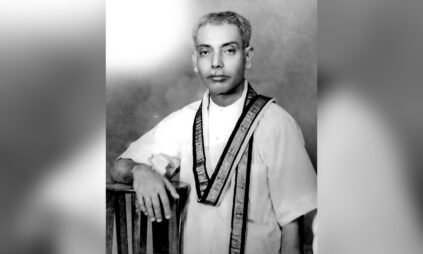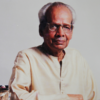- Empty cart.
- Continue Shopping
Artist C.Kondiah raju

Artist C.Kondiah Raju:
Artist C.Kondiah raju was born on 7 November 1898 in a house at Malaiya Perumal Koil Street, Mylapore, Chennai to a family of traditional artisans. His father C. Kuppaswami Raju was a Siddha medical practitioner. Before his death in 1912, Kuppaswami made arrangements for the young Kondiah Raju to learn the traditional skill of the Raju community – Religious painting. Kondiah Raju initially learnt painting from several teachers, including Murugesa Naiyakar and N. Subba Naidu, a well known artist from Madurai. In 1916, Kondiah Raju joined the Government School of Arts and Crafts.
In 1920, Kondiah raju joined the Ramana Maharishi Ashram at Thiruvannamalai, further evidence of his spiritual trait that would characterise his near nomadic life and resurface time and again in him. Kondiah, after leaving the Ashram, joined a “village drama” troupe, (or boys’ company as they were called in those days of all Men drama troupes).
Career of Kondiah Raju:
Kondaiah Raju and his group began to work for the newly set up litho printing presses of Sivakasi. His Gajendra Motcham, Meenakshi Kalyanam and many other religious prints are considered unrivaled masterpieces and continue to adorn the Puja rooms of South Indian households and smaller shrines across the Tamil country. So pervasive are his prints that many South Indians would visualize and recognize not only the many deities, but also leaders of the Indian freedom movement, contemporary political leaders and other important personalities only as depicted in his prints. His prints have been collected internationally and are even archived in the Victoria and Alber Museum (Uk) H.Daniel Smith Poster Archive, Syracuse University library.
Many of Kondiah Raju’s paintings bear a resemblance with Ravi Varma’s paintings His paintings were also printed in many of the Tamil magazines and Deepavali malars (special issues). His later years were spent in Kovilpatti, Tamil Nadu where he established the “Devi Art Studio”. The Studio in addition to paintings would also involve itself in Photography.In Kondiah’s paintings the central deity is emphasised by providing it a well-lit, central and prominent position and relegating the surroundings to static objects like pillars, lamps, etc.
Kondiah Raju had a number of pupils who assisted him and would automatically sign in their master’s name on all their works during their training. Many like T. S. Subbaiah continued to sign Kondiah Raju’s name above his own as Kondiah raju T.S.Subbiah, even after becoming an established artist and even after the death of his master! His most popular students were Mu.Ramalingam,T. S. Subbaiah who would establish themselves as master artists in their own right. In addition to the popular religious calendar art Kondiah Raju and his students continued to paint for advertisements, name boards, etc. for many shops and establishments in and around Kovilpatti.
In Hindstan Times – The works of calendar artists like SM Pandit, C Kondiah Raju, fetch anything between ₹2 lakh to 2.5 lakh. “I collected most of them from calendar publishers and printing presses from all over the country,” says Rajora. “The government should take steps to preserve their artwork, which are an important part of our country’s mass culture.”(Taken from Hindustan Times)
Artist Saint – C.Kondiah raju:
Kondiah Raju died on 27 July 1976. When he died, his pupils spoke of him with awe, calling him an ‘artist-saint’. Contemporary media accounts of his death describe him as a ‘Brahmachari whose students were like his children’. Though he had earned a fortune through his artistic commissions, he never married, distributed his wealth to others, and lived a simple life like a saint with one shirt, one veshti and one towel. In 1971, he would even turn down an offer to travel to Chennai to receive a Government award recognizing his contributions to art.
For artworks of Artist C.Kondiah raju:
https://www.thevarartgallery.com/product-category/artist/c-kondiah-raju/



